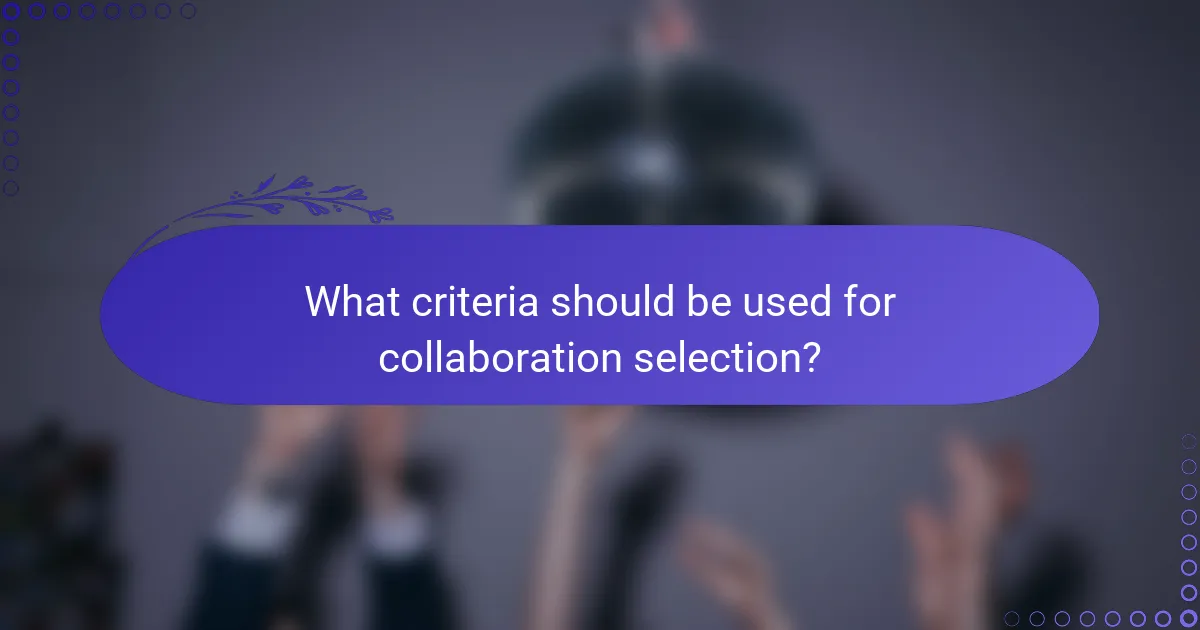Collaborative opportunities in advertising can significantly enhance your efforts by fostering valuable connections and partnerships. To successfully find and approach potential collaborators, it is essential to engage with the right networks and utilize personalized outreach strategies. Evaluating potential partners based on brand alignment and audience demographics will ensure that your collaborations are both effective and mutually beneficial.

How to find collaborative opportunities in advertising?
Finding collaborative opportunities in advertising involves actively seeking out connections and platforms where professionals share ideas and resources. Engaging with the right networks and events can lead to fruitful partnerships that enhance your advertising efforts.
Networking events
Networking events are gatherings where advertising professionals meet to discuss trends, share insights, and explore potential collaborations. These events can range from informal meetups to structured networking sessions, often held in major cities.
To maximize your experience, prepare a brief introduction about yourself and your work. Bring business cards and be open to engaging with various attendees, as you never know who might be a valuable contact.
Industry conferences
Industry conferences provide a platform for learning and networking among advertising professionals. These events typically feature keynote speakers, panel discussions, and workshops focused on current trends and innovations in advertising.
When attending, prioritize sessions that align with your interests and goals. Take notes and follow up with speakers and attendees afterward to solidify connections and explore collaboration possibilities.
Online platforms like LinkedIn
Online platforms, particularly LinkedIn, are essential for finding collaborative opportunities in advertising. By optimizing your profile and actively engaging with industry content, you can connect with potential partners and showcase your expertise.
Join relevant groups and participate in discussions to increase your visibility. Regularly share insights or articles related to advertising to attract like-minded professionals and foster connections.
Advertising forums and communities
Advertising forums and online communities serve as spaces for professionals to share knowledge, seek advice, and discuss collaboration opportunities. Platforms like Reddit, specialized forums, and Facebook groups can be valuable resources.
Engage actively by asking questions and providing insights. Look for threads focused on collaboration or project opportunities, and don’t hesitate to initiate discussions about potential partnerships with other members.

What are effective approaches to initiate collaboration?
Effective approaches to initiate collaboration include personalized outreach, leveraging mutual connections, and creating compelling value propositions. These strategies help establish rapport and demonstrate the benefits of working together.
Personalized outreach
Personalized outreach involves tailoring your communication to the specific individual or organization you wish to collaborate with. This can include referencing their recent projects, values, or goals, which shows genuine interest and understanding.
When crafting your message, keep it concise and focused. Highlight how the collaboration can benefit both parties. Avoid generic templates; instead, aim for a conversational tone that resonates with the recipient.
Leveraging mutual connections
Leveraging mutual connections can significantly enhance your chances of initiating collaboration. A warm introduction from a shared contact can build trust and credibility, making the recipient more receptive to your proposal.
Identify individuals within your network who have relationships with your target collaborators. A simple email or message asking for an introduction can pave the way for a more fruitful conversation.
Creating value propositions
Creating a strong value proposition is essential for convincing potential collaborators of the benefits of working together. Clearly articulate what each party stands to gain, whether it’s access to new markets, shared resources, or enhanced innovation.
Use specific examples to illustrate potential outcomes. For instance, if collaborating on a project could reduce costs by a certain percentage or increase efficiency, include those figures to make your case more compelling.

How to evaluate potential collaborators?
To evaluate potential collaborators, focus on their brand alignment, audience demographics, and past collaboration success. These factors will help you determine if a partnership will be mutually beneficial and effective in reaching your goals.
Assessing brand alignment
Brand alignment involves ensuring that the values, mission, and image of both parties resonate with each other. A strong partnership is built on shared goals and complementary strengths. For example, if your brand emphasizes sustainability, collaborating with a partner that shares this commitment can enhance credibility.
Consider creating a checklist of core values and mission statements to compare potential collaborators. This will help you quickly identify those who align closely with your brand ethos.
Analyzing audience demographics
Understanding the audience demographics of potential collaborators is crucial for effective targeting. Analyze factors such as age, gender, location, and interests to ensure that both audiences overlap significantly. A partnership with a collaborator whose audience matches yours can amplify your reach and engagement.
Utilize tools like Google Analytics or social media insights to gather data on audience characteristics. This information can guide your decision-making process and help you select partners that will resonate with your target market.
Reviewing past collaboration success
Evaluating the success of previous collaborations can provide insight into a potential partner’s reliability and effectiveness. Look for case studies or testimonials that highlight their past work and outcomes. Successful collaborations often demonstrate clear metrics, such as increased engagement or sales.
Request specific examples of past partnerships and their results. This will help you gauge how well they might perform in a new collaboration and whether their approach aligns with your expectations.

What criteria should be used for collaboration selection?
When selecting collaboration opportunities, it is essential to evaluate criteria that ensure alignment and mutual benefit. Key factors include shared goals, complementary strengths, and the reputation of potential partners.
Shared goals and objectives
Establishing shared goals and objectives is crucial for successful collaboration. Both parties should have a clear understanding of what they aim to achieve together, whether it’s increasing market reach, developing a new product, or enhancing brand visibility.
To assess alignment, discuss specific outcomes and timelines. For example, if one partner seeks to launch a product within six months, the other should be prepared to support this timeline. Misaligned objectives can lead to frustration and wasted resources.
Complementary strengths
Identifying complementary strengths allows partners to leverage each other’s capabilities effectively. For instance, one partner may excel in technology development while the other has strong marketing skills. This combination can create a more robust offering than either could achieve alone.
When evaluating potential collaborators, consider conducting a strengths assessment. List out each party’s key competencies and determine how these can enhance the collaboration. Avoid partnerships where strengths overlap significantly, as this can lead to competition rather than cooperation.
Reputation and credibility
The reputation and credibility of potential partners play a significant role in collaboration selection. A partner with a strong reputation can enhance your brand’s image and provide access to new networks and resources.
Research potential collaborators through industry reviews, testimonials, and case studies. Look for partners who have a proven track record of successful collaborations. Avoid partners with negative feedback or controversies that could harm your reputation.

What are the common pitfalls in collaborative advertising?
Common pitfalls in collaborative advertising include lack of clear communication and misaligned expectations, both of which can lead to ineffective campaigns and strained partnerships. Addressing these issues early can significantly enhance the success of collaborative efforts.
Lack of clear communication
Clear communication is essential in collaborative advertising to ensure all parties are on the same page regarding goals, strategies, and responsibilities. Without it, misunderstandings can arise, leading to wasted resources and missed opportunities.
To improve communication, establish regular check-ins and use collaborative tools that facilitate transparency. For example, shared project management platforms can help track progress and clarify tasks, reducing the risk of confusion.
Misaligned expectations
Misaligned expectations can derail collaborative advertising efforts, as partners may have different visions of success or varying levels of commitment. It’s crucial to align on objectives, target audiences, and performance metrics from the outset.
To prevent misalignment, create a detailed agreement that outlines each partner’s contributions and expected outcomes. Regularly revisiting these expectations can help ensure that all parties remain aligned throughout the campaign, fostering a more productive partnership.
